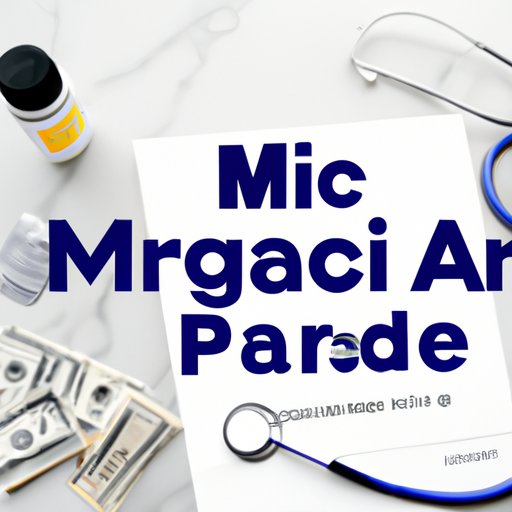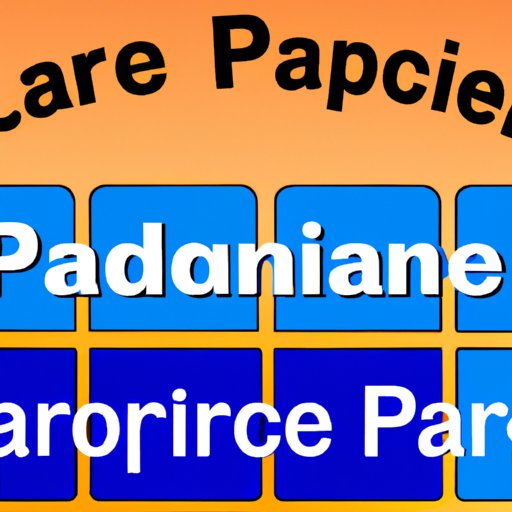Introduction
Medicare Part A is a federally funded health insurance program that provides coverage for hospital stays, skilled nursing facility care, home health care, and hospice care for those who are eligible. It is one of four parts of the Medicare program, with Part B covering outpatient services, Part C covering managed care plans, and Part D covering prescription drugs. Medicare Part A is often referred to as “Original Medicare” or “Traditional Medicare”.
According to the Centers for Medicare & Medicaid Services (CMS), approximately 35 million Americans have Medicare Part A coverage. In 2019, approximately 85% of those enrolled in Medicare Part A were age 65 or older, while 15% were under 65 and disabled. Those who are eligible for Medicare Part A include individuals who are 65 years or older, those who are younger than 65 and have certain disabilities, and those with end-stage renal disease.

Benefits of Medicare Part A
Medicare Part A provides coverage for hospital stays, skilled nursing facility care, home health care, and hospice care. Here are some of the benefits of Medicare Part A:
Coverage of Hospital Stays
Medicare Part A covers costs associated with hospital stays, including but not limited to room and board, nursing services, diagnostic tests, medications, and other medical supplies. According to CMS, most of these costs are covered in full after a deductible is met. There is no limit on the number of days you can stay in the hospital.
Coverage of Skilled Nursing Facility Care
Medicare Part A also covers costs associated with skilled nursing facility care. This includes up to 100 days of care in a skilled nursing facility following a three-day hospital stay. The first 20 days are covered in full after the deductible has been met, and there is a coinsurance payment for days 21-100.
Coverage of Home Health Care
Medicare Part A covers home health care services, such as physical therapy, speech language pathology, and occupational therapy. These services must be ordered by a doctor and provided by an approved home health agency. According to CMS, these services are covered in full after a deductible is met.
Coverage of Hospice Care
Medicare Part A also covers hospice care for those who are terminally ill. This type of care focuses on providing comfort and symptom relief rather than curative treatment. According to CMS, all related costs are covered in full after a deductible is met.
How Does Medicare Part A Work?
In order to understand how Medicare Part A works, it is important to understand the eligibility requirements, enrollment process, and explanation of deductibles and coinsurance.
Eligibility Requirements
Those who are eligible for Medicare Part A include individuals who are 65 years or older, those who are younger than 65 and have certain disabilities, and those with end-stage renal disease. Individuals who are eligible for Social Security or Railroad Retirement Board benefits are automatically enrolled in Medicare Part A. Those who are not automatically enrolled must sign up during their Initial Enrollment Period.
Enrollment Process
The enrollment process for Medicare Part A differs depending on whether or not you are automatically enrolled. If you are not automatically enrolled, you can sign up during your Initial Enrollment Period, which begins three months before you turn 65 and ends three months after you turn 65. You can also sign up during the General Enrollment Period, which runs from January 1 to March 31 each year. Those who are eligible for Medicare Part A due to disability may qualify for a Special Enrollment Period.
Explanation of Deductibles and Coinsurance
Once enrolled in Medicare Part A, you will be responsible for paying a deductible and coinsurance for certain services. The deductible for hospital stays is $1,408 for 2020 and the coinsurance is $352 per day for days 61-90 and $704 per day for days 91 and beyond. The deductible for skilled nursing facility care is $176 per benefit period and the coinsurance is $176 per day for days 21-100.

Understanding the Cost of Medicare Part A
In addition to deductibles and coinsurance, there are premiums associated with Medicare Part A. Most people who are eligible for Medicare Part A do not have to pay a premium because they or their spouse paid Medicare taxes while working. For those who do need to pay a premium, the amount depends on how long they or their spouse worked and paid Medicare taxes. For 2020, the standard premium is $458 per month.
It is important to note that if you are eligible for Medicare Part A and do not enroll when you are first eligible, you may be subject to a late enrollment penalty. According to CMS, the penalty is 10% of the current premium for each 12-month period that you were eligible but not enrolled in Medicare Part A.
Comparing Medicare Part A to Other Health Insurance Options
It is important to understand how Medicare Part A compares to traditional health insurance. Traditional health insurance is typically offered through employers and provides coverage for hospital stays, physician visits, prescription drugs, and other medical services. Premiums vary depending on the plan and the individual’s age and health status.
When comparing Medicare Part A to traditional health insurance, it is important to consider cost, coverage, and out-of-pocket expenses. Medicare Part A typically has lower premiums than traditional health insurance, but the coverage is more limited. Medicare Part A does not cover routine doctor visits, preventive care, or prescription drugs, so you may need to purchase a supplemental policy to cover these services. Additionally, Medicare Part A has higher out-of-pocket expenses than traditional health insurance, including deductibles and coinsurance.
Conclusion
Medicare Part A is a federally funded health insurance program that provides coverage for hospital stays, skilled nursing facility care, home health care, and hospice care for those who are eligible. Those who are eligible for Medicare Part A include individuals who are 65 years or older, those who are younger than 65 and have certain disabilities, and those with end-stage renal disease. Medicare Part A typically has lower premiums than traditional health insurance, but the coverage is more limited. Understanding the benefits, cost, and eligibility requirements of Medicare Part A is essential for making an informed decision about health insurance.
(Note: Is this article not meeting your expectations? Do you have knowledge or insights to share? Unlock new opportunities and expand your reach by joining our authors team. Click Registration to join us and share your expertise with our readers.)
